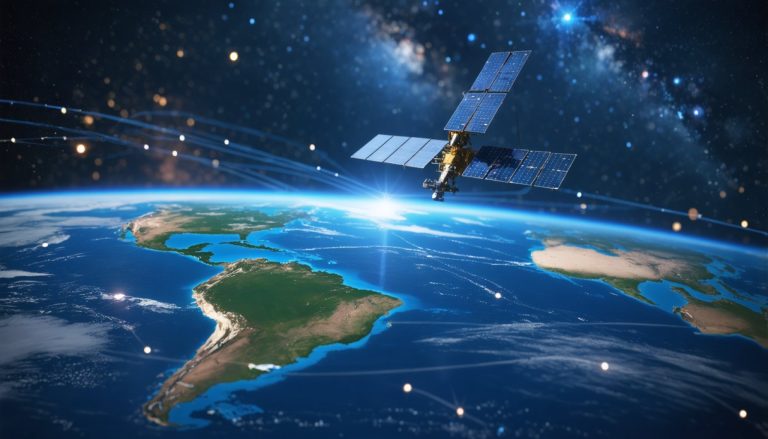
MMRFIC Technology Private Limited, affiliated with Sansera Engineering Limited, has achieved a noteworthy milestone by winning an award under the iDEX Prime X Challenge. This recognition is for their development of a cutting-edge 200-Watt Ka band Solid State Power Amplifier (SSPA) tailored for satellite ground stations. The announcement was made on November 19, 2024, and the project is backed by a substantial grant of ₹10 crores from the Defence Space Agency (DSA) under India’s Ministry of Defence.
On the stock market front, shares of Sansera Engineering Limited experienced a positive shift, trading at ₹1,483, showing an increase of ₹26.35 or 1.81 percent by mid-afternoon. The Bangalore-based firm is set to engineer an indigenous SSPA Module for satellite ground station transmitters operating in the Ka Band, a vital component for the phased array systems essential in satellite communications.
The company’s leadership highlighted that this initiative supports the Indian government’s Atmanirbhar Bharat campaign. The grant provided will finance 50% of the overall product development budget through the IDEX “Prime” program.
Founded in 2014, MMRFIC Technology focuses on mm-Wave and RF products across various sectors such as defense, communications, automotive, and healthcare. By integrating advanced technologies such as machine learning and artificial intelligence, the company is paving the way for state-of-the-art radar systems. In addition, their parent company, Sansera Engineering, established in 1981, is a renowned manufacturer of precision components across multiple industries.
MMRFIC Technology’s Recent Honors: A Step Forward in Satellite Connectivity
On November 19, 2024, MMRFIC Technology Private Limited, a subsidiary of Sansera Engineering Limited, garnered significant accolades by winning under the esteemed iDEX Prime X Challenge for their innovative 200-Watt Ka band Solid State Power Amplifier (SSPA). This advancement is not just a technological leap but a strategic move to enhance India’s satellite communication capabilities, receiving substantial financial backing of ₹10 crores from the Defence Space Agency (DSA), part of the Ministry of Defence.
Key Questions Addressed
1. What is the significance of the 200-Watt Ka band SSPA?
– The SSPA is crucial for satellite ground stations as it ensures reliable signal transmission and reception for various applications, including telecommunications and broadband services. Its high power and efficiency can significantly improve satellite communication reliability.
2. How does this technology support national initiatives?
– This project aligns with the Indian government’s Atmanirbhar Bharat (self-reliant India) initiative by reducing dependency on foreign technology and promoting indigenous capabilities in critical sectors like defense and communications.
3. What are the future implications of this technology?
– The advancements in SSPA technology can lead to improved satellite constellations and services, enhancing internet penetration and connectivity even in remote areas of India, thereby promoting digital inclusion.
Challenges and Controversies
Despite these advancements, MMRFIC Technology faces several challenges:
– Regulatory Hurdles: The space and defense sectors are heavily regulated, which may slow down the pace of development and deployment of new technologies.
– Competition: The global market for satellite technologies is highly competitive, with established players that MMRFIC will need to contend with. Ensuring quality and sustained innovation will be crucial.
– Technical Limitations: While this SSPA represents a significant upgrade, developing a fully operational system in the face of evolving user demands and technological standards can prove complex.
Advantages and Disadvantages
Advantages:
1. Enhanced Performance: Higher power outputs can lead to more robust signal processing, crucial for advancing communication systems.
2. Cost Efficiency: The indigenous development of technologies reduces procurement costs and fosters local expertise.
3. Support for National Security: Strengthening satellite technologies contributes to enhanced national security and defense capabilities.
Disadvantages:
1. Developmental Risks: The complexities involved in developing cutting-edge technologies may result in unforeseen costs or project overruns.
2. Market Acceptance: New technologies may face skepticism in a market dominated by traditional solutions, necessitating substantial marketing efforts.
3. Resource Allocation: Significant financial and human resources are required, which could divert attention from other critical projects.
As MMRFIC Technology continues its journey, their commitment to integrating machine learning and artificial intelligence into radar systems signals a forward-thinking approach that may redefine satellite communication and ground support systems.
For further information and updates, you can visit the [Sansera Engineering](https://www.sansera.in) website.



